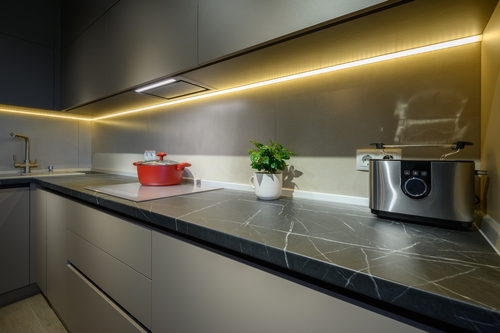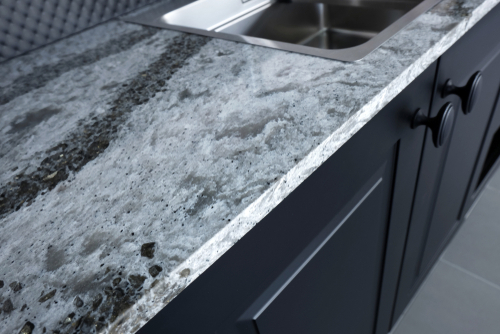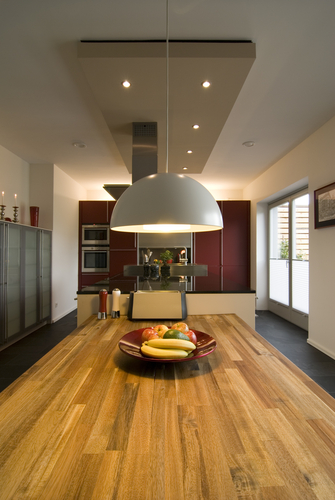What do you do when you have had enough of your kitchen? For most people, come spring, they want to have their kitchen made over in such a way that it reflects the new year and also reflects any changes in their lives.
Perhaps you have had a promotion at work and want to upgrade some of your appliances or the overall look of your kitchen. Or, maybe you have had a baby and are looking for a more practical kitchen.
Whatever the reason, one area to focus on when making over your kitchen is the worktops.
Kitchen worktops are a significant component of any kitchen design. Not only do these surfaces serve as a functional place for preparing meals, but they also dramatically impact the kitchen’s overall aesthetic. Many materials are available for kitchen worktops, and the choice often depends on personal preference, budget, and practicality.
However, if you want to have your kitchen countertops refitted but don’t have the time (or the money) to pay for a complete refurb, it may be worth considering having an overlay fitted.
In the following article, you will be guided through what an overlay is, how it is fitted, and the different material types, and, of course, you will be given a rough estimate of the costs. So, enjoy!
What Is A Kitchen Countertop Overlay?

A kitchen countertop overlay, also known as countertop resurfacing, is a process of covering an existing countertop surface with a new material, typically a thin layer of decorative laminate or solid surface material. This process is an affordable and convenient way to update the look of an outdated or damaged kitchen countertop without the need for a full replacement. Therefore, if you want the look of a kitchen worktop replacement without the hefty price tag, this is the best option for you.
How Overlays Are Fitted
The countertop overlay process involves first cleaning and sanding the existing countertop surface to create a smooth and even surface. Then, a layer of adhesive is applied to the surface, and the new material is laid over it. The new material is then trimmed and finished to create a seamless and uniform appearance.
The thickness of kitchen countertop overlays can vary depending on the material used and the manufacturer’s specifications or even your own. In general, countertop overlays are typically between 1/8 inch to 1/4 inch thick.
Laminate countertop overlays are typically the thinnest option, with a thickness of around 1/8 inch. Solid surface countertop overlays, such as those made from acrylic or polyester resins, are typically thicker, with a thickness of approximately 1/4 inch.
Types of Overlays
Now, onto the more designer part; what materials are kitchen overlays made from? There are a few popular options, but if you want something more extravagant, you can even opt for marble. For the sake of budget, however, the following list is a bit more mid-range in its costs!
So, here are five commonly used kitchen worktop materials that can also usually be found when choosing an overlay for your kitchen.
Granite
Granite is a striking, natural stone that is both durable and attractive. It is heat-resistant, scratch-resistant, and easy to clean. Granite is available in various colours and patterns, making it a great choice for any kitchen design. A potential downside to granite is that it can be expensive and requires periodic sealing to prevent staining. The cost of a granite overlay for a kitchen countertop ranges from £50 to £100 per square foot, including installation.

Quartz
Quartz is a man-made stone that combines crushed quartz with resin. It is extremely durable, scratch-resistant, and non-porous, making it resistant to stains and bacteria. Quartz is available in various colours and patterns and can be made to look like natural stone. A potential issue with quartz is that it can be sensitive to heat, so if you are going to be placing used frying pans onto it or boiling pots, you will likely need to invest in some covers to prevent the stone from being scalded.
Relating to cost, you can expect to pay about £50-£200 per square foot for this overlay type.
Laminate
Laminate worktops are made by layering paper or fabric with resin and pressing it onto a wood or particle board base. Laminate is affordable and comes in a variety of colours and patterns, including designs that mimic natural stone. A laminate surface is easy to clean and relatively durable, although it can be scratched or chipped. It is also more affordable, and for a square foot of laminate countertop, you can expect to pay about £30-£50.
Stainless Steel
Stainless steel worktops are popular for commercial kitchens because they are durable, easy to clean, and hygienic. They are also resistant to heat and stains. Stainless steel worktops are also increasingly used in home kitchens, especially in modern or industrial-style designs. The downside to stainless steel is that it can be noisy and it can scratch easily, causing a dulling of the shine and reflective quality.
If you want to add this striking material to your kitchen, it is worth looking around for a reasonable price, as costs vary per square foot.
Wood

Wooden worktops are a popular choice for traditional or rustic-style kitchens. They are warm and inviting and can be sanded and refinished if they become scratched or worn, making them an ideal choice for those on a budget.
Wood is also a natural material that is renewable and biodegradable. With so much emphasis on the environment nowadays by small businesses, many of those who use wood in their countertops will use sustainable wood, making it an ethical and environmental choice.
Now, onto the types of wood! When choosing a wooden worktop for your kitchen, most people want a wood that looks attractive and is functional, as this will minimize maintenance. So, if you are looking for a wooden countertop for your kitchen, what are the most common types you will come across?
Oak
Oak is one of the toughest woods out there that is resistant to wear and tear. It has a prominent grain pattern that adds character to the countertop, making it a popular choice for traditional and rustic-style kitchens.
Cherry
Cherry is a beautiful and warm-toned wood that has a distinctive grain pattern. It is softer than maple or oak, making it more susceptible to scratches and dents, but it can be protected with regular maintenance and care.
Walnut
Walnut is a rich and dark-toned wood that has a unique grain pattern. It is a durable wood that is resistant to wear and tear, but it can be expensive compared to other types of wood.
Bamboo
Bamboo is a sustainable and eco-friendly option for kitchen countertops. It is a hard and durable material that accumulates minimal scratches and stains. It has a light, natural colour and a distinctive grain pattern that adds character to the kitchen.
One thing to note when choosing any wooden overlay is that the price will vary widely based on where you purchase the overlay from and the rarity/hardiness of the wood, hence why they are not listed. They can even vary based on where you are located in the world. So, even if you want a bamboo overlay, it is worth shopping around for the best price and really doing your homework!
Things To Remember
When it comes to having any major work completed in your kitchen, you will need to consider your overall aesthetic; there is a minimal point in investing in a surface or overlay for your kitchen that looks out of place!
Also, be sure to get an overlay that matches your kitchen; if you regularly pound meat and roll dough, there is going to be little to be gained from investing in a marble overlay unless you want a lot of repair costs.





